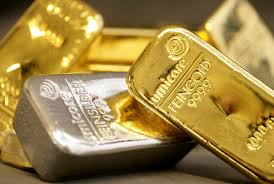The Basics of Precious Metals Investing

In today’s uncertain economic climate, investors are looking for new ways to maintain their strong financial positions, outside of mainstream investments like stocks and real estate. The perfect candidate to replace these traditional avenues for many investors is precious metals investing, for a variety of reasons. There are several different precious metals that are useful for investment purposes, among them gold, silver, platinum, and palladium. They each have different strong points for why an investor would be interested in them. Every investor should consider including precious metals investing in his or her portfolio, particularly given the outlook on the economy and on various world currencies.
Other Investments Not Working
Investors are increasingly coming to realize that the traditional investments they have staked their futures on are becoming less and less lucrative. As a result of the global economic downturn, stocks and bonds are no longer the surefire choices they once were. The real estate market is still reeling from the collapse of the housing bubble, causing investment in real estate to continue to be too risky for many investors. Furthermore, there have been no significant real estate markets providing a high return on investment of late. Most investors are realizing that it is time to turn to alternatives, and in particular precious metals investing.

What Are Precious Metals?
Precious metals investing involves owning rare elemental metals or derivative financial instruments like futures that are based on them. Precious metals are lustrous, rare, valuable metals that people prize for industrial applications and for jewelry. In the past, precious metals themselves were used as currency, before they were replaced with the widespread fiat money system that is in place today. They include gold, silver, platinum, and palladium, as well as even rarer metals like rhodium, iridium, osmium, and ruthenium. Precious metals investing provides a strong hedge against fluctuations in currencies and potential economic crises. Large tradable quantities of precious metals are known as bullion.
Golden Ticket
Gold is perhaps the most popular precious metal for investors to have as part of their portfolios. It is a critical hedge against currency fluctuations and other problems like war and social unrest. Furthermore, its prices tend to be independent of other commodities. They also are not closely related to the supply of gold. Instead, prices are based on demand for gold as reliable store of value for banks and investors.
Silver Investment
Silver is another very popular precious metal for investors. It is a smaller market than gold, and though it still attracts a substantial trading volume, it is more susceptible to market manipulation from giant investment banks than gold is. The industrial applications for silver are increasing every day as new technology improves, resulting in increasing demand for silver and increased prices. In general, silver prices are closely related to gold prices.
Platinum and Palladium
These similar elements are also used in precious metals investing by many investors. Platinum is highly resistant to corrosion, and is critical in a number of industrial applications as well as in jewelry. Palladium is another rare and valuable metal. It is a key component in catalytic converter, which are installed in automobiles to reduce air pollution. These precious metals’ prices are driven by their demand in industrial and jewelry applications, as well as any supply changes that may be occurring.
Precious metals investing is becoming an increasingly important and popular tool for investors who are interested in long-term growth. Although it will generally not result in overnight wild growth, it does add great stability to a portfolio, and is valued as a strong hedge against the kinds of risks that are rampant in today’s economic climate.








